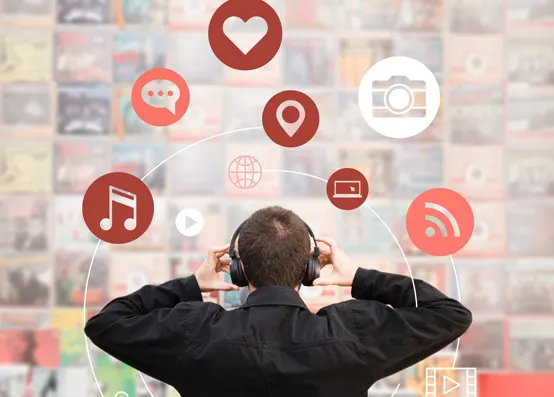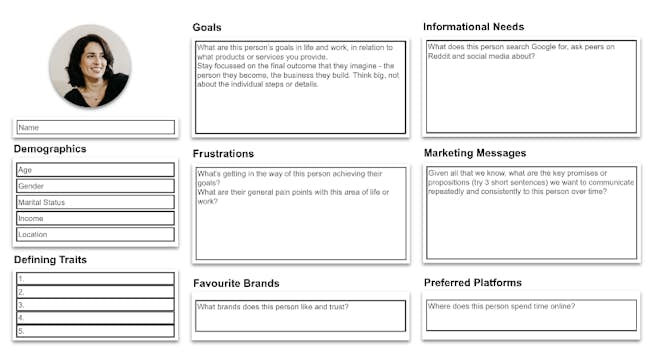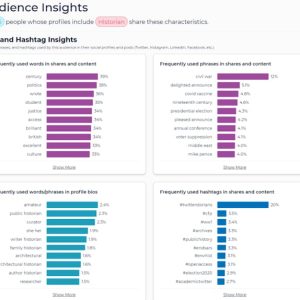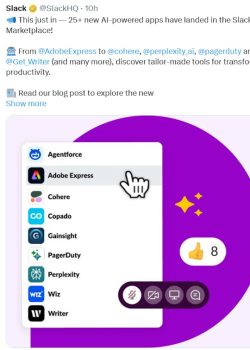
Your buddies listen to you, I’m sure. It’s likely that your favourite boss does as well. Why, however, do corporations believe it’s okay to continue promoting and talking on social media while disregarding the demands of their customers—and, let’s face it, their grievances and unfavourable reviews?
There will be no success with this strategy. Customer happiness is just one of the many advantages of social listening.
An effective social listening approach can help you find new unique selling points (USPs), improve word-of-mouth recommendations, track competitor activity with ease, and improve the reputation of your company.
Remember that according to Marigold’s 2024 Consumer Trends Index Report, 78% of consumers are more likely to interact with offers that are specifically catered to their interests, and 63% of consumers are willing to pay extra to shop with brands they trust.
Learn how to create an effective social listening plan that can revolutionise your company and position your brand above the competition.
What is social or audience listening?
Monitoring conversations about your company, goods, or rivals on digital media sites including blogs, news sites, and webpages is known as audience listening. It enables you to learn more about your audience and build enduring connections.
Social listening, or keeping an eye on conversations on social media, is an effective method of conducting audience listening. This method primarily focusses on tracking conversations and patterns on various social media sites.
It’s critical to keep up with the conversations that take place about your brand and industry-related subjects on a daily basis. You may produce more pertinent content, build more precise target personas, and improve your digital tactics by having a better understanding of the topics being discussed.
What are the benefits of social listening?
There are many benefits to using audience listening in your marketing campaigns. It can assist you in:
- Stay on top of developments in your market to strengthen industry knowledge – this is particularly important for B2B marketers.
- Track what people are saying about your brand on social media and other online channels like websites, blogs, and news articles
- Monitor competitor mentions, updates, and announcements online
- Develop new ideas for your content, messaging, and campaigns
- Understand the needs and motivations of your audience and enhance customer service
- Adapt products, services, and propositions to suit existing and emerging customer needs
- Build a rapport with your audience and cultivate a meaningful and long-term relationship
- Help you react and prepare for a social media crisis or brand incident (more on that later!)
How to listen like a pro
36% of American consumers cite “excellent customer service” as a primary factor when recommending a brand online, according to Statista. Social monitoring is therefore a useful tool for learning how consumers perceive your brand.
These six steps can help you become an expert audience listener!
- Step 1 – Identify what to listen out for
- Step 2 – Use social listening tools
- Step 3 – Spy on your competitors
- Step 4 – Learn how to respond to comments, compliments, and complaints
- Step 5 – Take notes
- Step 6 – Take action
It’s that simple. Let’s look at each step in more detail.
1. Identify what to listen out for
Establishing the “what” and “why” of your social listening strategy is the first stage.
You may start by using this helpful buyer persona template and watching a video that walks you through the process of creating a persona using ChatGPT.

Your larger digital marketing plan should align with your social listening objectives. When engaging in social listening, you can concentrate on the following important areas:
- References to the brand
- Innovations and developments in the industry
- Activity of competitors
- Feedback from customers, ranging from compliments to grievances and all in between
- Relevant keywords (you can get help from these free keyword research tools)
- Subjects related to your industry or business
- Trending and targeted hashtags
- Discussion boards on websites such as Google Groups, Facebook, Reddit, and LinkedIn
You can learn a lot about your industry, rivals, and audience by keeping an eye on some or all of these. By using the appropriate platforms and producing superior content, you can raise engagement and brand exposure.
On the DMI podcast, Katrina Noelle, the founder of KNow Research, stated: “As market researchers, we do a lot of asking. The best thing about social data is that it comes without any questions. It is the topic that people are naturally drawn to discuss. That is essential to comprehending what is genuinely organic.
2. Use social listening tools
Today, a variety of audience listening techniques are available. Let’s examine five of the most well-liked choices for your company.
Hootsuite

Hootsuite makes it simple to keep an eye on all of your networks at once by enabling you to manage several social media accounts from a single dashboard.
You can follow influencer accounts, interact with messages, track brand mentions, and keep an eye on term usage with this tool. Additionally, you may schedule posts, generate lists of leads and influencers, schedule posts, get analytics reports to gauge success, and even benefit from training offered by Hootsuite University.
Google Alerts
Because of its wide reach, Google Alerts is highly regarded. It searches every piece of online content—web pages, blogs, news items, scientific research, and more—for the search terms you have chosen.
The ability to create alerts for any term or phrase is a significant benefit. This enables you to monitor goods, services, competitors, brand mentions, or keywords. To be informed about what is being said about your brand, you may also alter how frequently email alerts are sent.
Brandwatch
Brandwatch is a social media analytics tool that tracks billions of online discussions on social media feeds, blogs, forums, news, videos, and photos.
It is a social media management and consumer intelligence platform that lets you monitor keywords and mentions in real time. It also has functions like sentiment and image analysis.
With the use of this tool, you may learn important things about influencers, trends, consumer behaviour, and brand perception.
Sparktoro

SparkToro, founded by Rand Fishkin, the inventor of Moz, is marketed as “an audience research tool that reveals the websites your customers visit, social accounts they follow, hashtags they use, and more – enabling you to create effective marketing strategies.“
The technology analyses more than 80 million profiles from billions of YouTube channels, podcasts, social media accounts, and web sites. It assists you in learning what your audience watches, reads, listens to, follows, and shares on the internet.
In addition to a free plan, SparkToro offers premium plans with access to more services, including agency-specific options.
Mention
Mention is able to monitor 42 different languages and billions of online pages. In order to keep you ahead of any potential bad press or problems, it also provides tools for competition analysis and a crisis management function.
Advice: Take observational social listening into consideration if money is tight. Set up Google Alerts to get notified when your brand is mentioned, and keep an eye on your phone calls, emails, and social media accounts. Make a list of frequently used terms and phrases to spot trends and learn more about the attitudes and sentiments of your target audience.
3. Spy on your competitors
Keeping an eye on your rivals to see what they’re doing is always a good idea, particularly if they’re increasing engagement or creating talk.
Social media metrics and social intelligence technologies can help you accomplish this. Keep an eye on the themes and content kinds that get the most interaction, the discussions they start, the promotions they run, and the times at which they publish.
With these tools, pay attention to the content that appeals to their audience as well as more conventional measures like likes and followers.
Sprout Social, TokBackup, and Determ are popular social media networks for competitive research in addition to the previously stated technologies.
Among the native platform tools available to you are:
TikTok’s tools for identifying trends
Library of Meta Ads
Library of Meta Brand Partnerships
Fanpage Karma
Few tools can compare to FanPage Karma’s lasting capability of offering comprehensive statistics across social media networks.
This tutorial, which was taken from a DMI masterclass, shows how to get useful information out of FanPage Karma and enter it into ChatGPT to get useful insights.
4. Learn how to respond to comments, compliments & complaints
It’s important to pay attention to what your customers are saying, both positively and negatively, when you set up social listening to monitor mentions.
Every company eventually encounters unfavourable or even fraudulent reviews, but how you respond to them is what really distinguishes your brand.
Reach out if someone is complaining about your product or service or if you are dealing with a complaint. Begin with a straightforward expression of regret, such “I’m sorry you’re having this experience,” and then go straight to the point. Offer to have a private discussion to settle the issue, maybe on WhatsApp or another platform. Demonstrate your concern and dedication to retaining them as a client.
It’s critical to reply quickly to comments on social media. If you receive positive comments, thank them and, if you can, make your response unique. In response to criticism, express gratitude for the person’s input and ask them to elaborate or discuss the issue further so that you can work to find a solution.
In order to improve your marketing efforts, you should read “WhatsApp Marketing: What You Need to Know.”
5. Take notes
It’s important to pay attention to what your customers are saying, both positively and negatively, when you set up social listening to monitor mentions.
Every company eventually encounters unfavourable or even fraudulent reviews, but how you respond to them is what really distinguishes your brand.
Reach out if someone is complaining about your product or service or if you are dealing with a complaint. Begin with a straightforward expression of regret, such “I’m sorry you’re having this experience,” and then go straight to the point. Offer to have a private discussion to settle the issue, maybe on WhatsApp or another platform. Demonstrate your concern and dedication to retaining them as a client.
It’s critical to reply quickly to comments on social media. If you receive positive comments, thank them and, if you can, make your response unique. In response to criticism, express gratitude for the person’s input and ask them to elaborate or discuss the issue further so that you can work to find a solution.
In order to improve your marketing efforts, you should read “WhatsApp Marketing: What You Need to Know.”
6. Take action
It’s important to pay attention to what your customers are saying, both positively and negatively, when you set up social listening to monitor mentions.
Every company eventually encounters unfavourable or even fraudulent reviews, but how you respond to them is what really distinguishes your brand.
Reach out if someone is complaining about your product or service or if you are dealing with a complaint. Begin with a straightforward expression of regret, such “I’m sorry you’re having this experience,” and then go straight to the point. Offer to have a private discussion to settle the issue, maybe on WhatsApp or another platform. Demonstrate your concern and dedication to retaining them as a client.
It’s critical to reply quickly to comments on social media. If you receive positive comments, thank them and, if you can, make your response unique. In response to criticism, express gratitude for the person’s input and ask them to elaborate or discuss the issue further so that you can work to find a solution.
In order to improve your marketing efforts, you should read “WhatsApp Marketing: What You Need to Know.”
Great brand examples of social listening
Social listening is used by any brand that wants to build trusting relationships with its customers and provide outstanding customer service. You can get ideas from these four outstanding examples from well-known brands.
1. Netflix
The streaming behemoth Netflix uses social media to advertise its newest series and celebrities.
In order to engage viewers, Netflix goes above and beyond typical promotion on its YouTube channel, @stillwatchingnetflix, which has over 8.7 million subscribers. It shares actor interviews and features reactions from celebrities, like drag queens Trixie Mattel and Katya.
Additionally, Netflix runs @NetflixGeeked on X to engage with viewers and bolster its reputation in the entertainment industry. This platform presents an opportunity to market its vast back catalogue and draw in new audience members.
2. Chipotle
By regularly asking for input across its channels and utilising social listening to discover consumer preferences, fast food chain Chipotle injects some flavour into its social media strategy.
A recent Chipotle TikTok carousel asking fans if they are aware of their gluten-free selections received 49 comments and 909 views.
Along with showcasing user-generated content and new menu items that elicit response from customers, Chipotle also shares culinary secrets on social media, showcasing one of its chefs. Customers are excited by their mystery box promotion and are encouraged to post about their unboxing experiences on social media.
Chipotle uses social listening to find content producers who are ardent supporters of their brand and to monitor who is discussing it. One famous example is Dillon Wareham from Alabama, who used YouTube and TikTok to record his experience while eating Chipotle for 1,000 days in a row. As a result, he received more prizes, a vacation to Hawaii, and even a burrito bowl named after him!
Tip: Learn “How To Go Viral On TikTok: Tips from Top Accounts” to boost your channel’s visibility.
3. Slack
A messaging app In the realm of business communication, Slack is well-known, but it also uses social listening to keep up with trends and have pertinent discussions.
Slack is a B2B company, but it doesn’t hold back from being entertaining and interactive. They conduct surveys to learn more about the wants and desires of their clients and utilise comedy to engage their followers.
This tweet emphasises Slack’s primary goal, which is to improve communication by integrating AI techniques.

In order to notify any delays or problems and to give real-time platform updates, they also keep up a Slack Status landing page. Customers can interact with the business directly and stay updated thanks to this.
How to deal with a crisis using social listening
By enabling you to keep an eye on what people are saying and take proactive measures to handle the issue, social listening may be quite helpful when dealing with unfavourable comments or possible emergencies.
Social listening can occasionally act as a warning indicator for major brand issues or issues with your products. Set up alerts to inform a committed team that is qualified to deal with such issues in order to stay ahead of the game.
When an issue occurs, adhere to the three A’s.
- Acknowledge – Acknowledging the problem, both internally and externally, is the first step. Refrain from withdrawing or stopping social connections. Rather, assume control of the situation and show that you are making an effort to find a solution.
- Apologize – Depending on the circumstances, craft an apology that seems sincere and relatable. Avoid using corporate lingo because your customers will think it’s a pre-written response. To address the issue in a video or statement, use a genuine, human tone and, if required, include a senior team member.
- Address – An apology alone will never be enough, no matter the crisis. Consumers and the general public must be aware of your plans for fixing the problem and making sure that it doesn’t occur again.
Download for more detailed instructions on this subject. ‘The DMI Guide to Social Media Crises’.
Use social listening to know your customers better
Marketers have a rare opportunity to interact with audiences from a variety of demographics throughout the globe thanks to social media. But it takes ability to use social media platforms to properly reach your audience. The Professional Diploma in Social Media from DMI gives you all the tools you need to be successful on a variety of platforms. Social research, content production, affiliate marketing, social commerce, customer support, and strategy will all become more clear to you. The main functions of popular platforms including Facebook, LinkedIn, Instagram, TikTok, X, and WhatsApp will also be covered. Start your journey by enrolling today!

